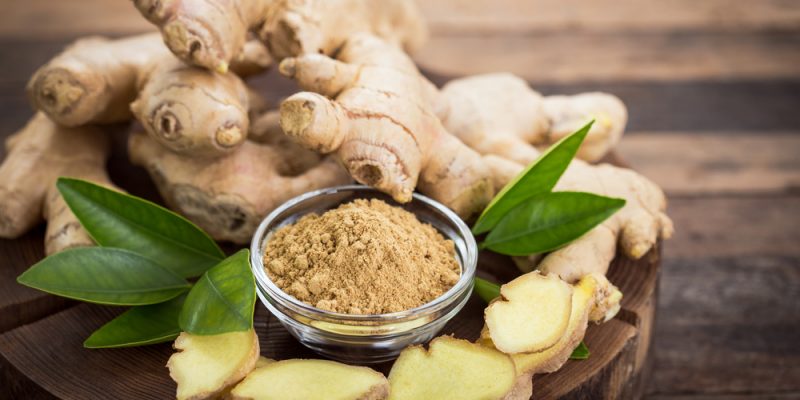Spotlight on Ginger
It’s no wonder that ginger is revered in many parts of the world, not only does the root add delicious flavour to both sweet and savoury dishes, but it is one of the healthiest and most beneficial spices in the world.
Originating in China, the flowering plant belongs to the zingiberaceae family, and is closely related to turmeric, cardamom and galangal. The rhizome (underground part of the stem) is the part commonly used as a spice, and it is consumed fresh, dried, powdered, pickled, crystallised, or as a juice or oil.
Healthy snapshot
- Gingerol is the main bioactive compound in ginger, responsible for much of its medicinal properties. It is commonly used to treat nausea, especially seasickness, morning sickness, post-surgery nausea, and general queasiness.
- Ginger has also been found to have anti-inflammatory properties, reducing muscle soreness and pain, as well as relieving symptoms of osteoarthritis.
- On top of this, ginger is used to treat everything from chronic indigestion, infections, menstrual pain, high cholesterol, high blood sugar, and improving brain function and protecting against Alzheimer’s disease.
Tips for selection & storing
- Fresh ginger comes in young and mature forms. Young ginger should have pale yellow and pink skin. The thin, firm skin doesn’t require peeling. Mature ginger should be firm and robust. It should have a spicy fragrance and smooth, golden skin. Make sure the skin doesn’t look withered or wrinkly.
- In general, ginger skin should be thin — never thick and fibrous. You should be able to easily nick the skin with your nail.
- The best way to keep ginger is in an airtight zip-lock bag or in plastic wrap, stored in the vegetable compartment of your refrigerator. This method should keep unpeeled ginger root fresh for up to 8 weeks.
- If you don’t use it regularly, you can store it in the freezer and grate it when needed.
Transportation & availability
- Fresh ginger is available all year round from your local supermarket or greengrocer.
- South East Queensland is the prime ginger growing region in Australia. It produces around 8000 tonnes per year, with about 60% of production supplied to the Australian domestic fresh market and 40% supplied to the first stage processing market.
- Ginger is graded by advanced machinery to sort it into size and fibre content and then transported all over Australia. Given the relatively long shelf-life, it allows for flexibility in distribution, including sea, air, rail, and road freight.
Serving ideas
- Ginger can be eaten fresh, dried, ground, pickled, crystallised, or as an oil. It’s flavour translates easily into both savoury and sweet dishes.
- Try adding a teaspoon of grated fresh ginger to a cup of hot water with lemon juice and honey for a warming winter drink or soothing treatment for sore throats and colds.
- For a delicious sweet (and healthy) treat, try crystallised ginger coated in dark chocolate.
- Add grated and sliced fresh ginger or ginger powder to curries, soups, stews, stir-fries and sauces.
- You can also add ginger powder or crystallised ginger to cakes, biscuits, slices, and puddings for a delicious warm and spicy flavour.
